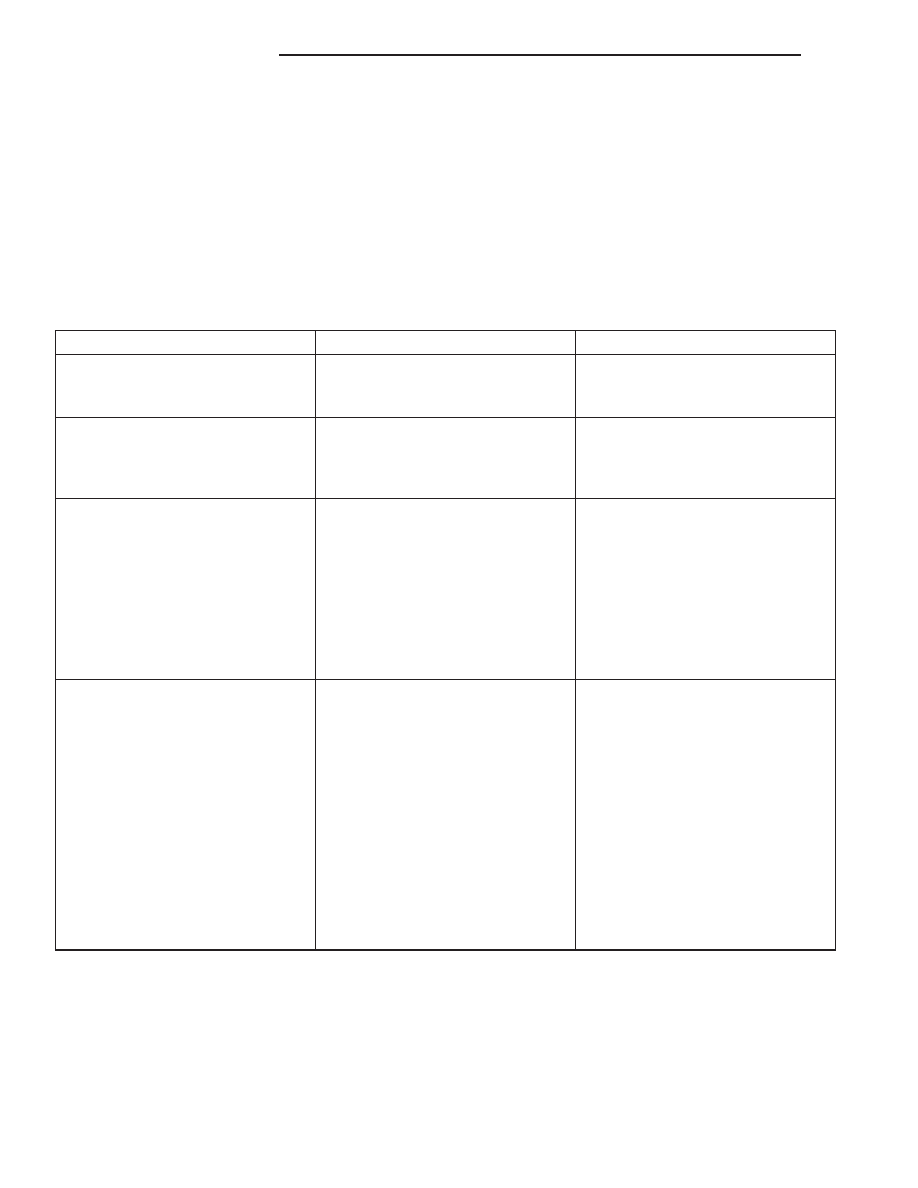Dodge Dakota (R1). Manual - part 208

DRIVELINE SNAP
A snap or clunk noise when the vehicle is shifted
into gear (or the clutch engaged), can be caused by:
• High engine idle speed.
• Transmission shift operation.
• Loose engine/transmission/transfer case mounts.
• Worn U-joints.
• Loose spring mounts.
• Loose pinion gear nut and yoke.
• Excessive ring gear backlash.
• Excessive side gear to case clearance.
The source of a snap or a clunk noise can be deter-
mined with the assistance of a helper. Raise the vehi-
cle on a hoist with the wheels free to rotate. Instruct
the helper to shift the transmission into gear. Listen
for the noise, a mechanics stethoscope is helpful in
isolating the source of a noise.
DIAGNOSTIC CHART
Condition
Possible Causes
Correction
Wheel Noise
1. Wheel loose.
1. Tighten loose nuts.
2. Faulty, brinelled wheel bearing.
2. Replace bearing.
Axle Shaft Noise
1. Misaligned axle tube.
1. Inspect axle tube alignment.
Correct as necessary.
2. Bent or sprung axle shaft.
2. Inspect and correct as necessary.
Axle Shaft Broke
1. Misaligned axle tube.
1. Replace the broken shaft after
correcting tube mis-alignment.
2 Vehicle overloaded.
2. Replace broken shaft and avoid
excessive weight on vehicle.
3. Erratic clutch operation.
3. Replace broken shaft and avoid
or correct erratic clutch operation.
4. Grabbing clutch.
4. Replace broken shaft and inspect
and repair clutch as necessary.
Differential Cracked
1. Improper adjustment of the
differential bearings.
1. Replace case and inspect gears
and bearings for further damage.
Set differential bearing pre-load
properly.
2. Excessive ring gear backlash.
2. Replace case and inspect gears
and bearings for further damage.
Set ring gear backlash properly.
3. Vehicle overloaded.
3. Replace case and inspect gears
and bearings for further damage.
Avoid excessive vehicle weight.
4. Erratic clutch operation.
4. Replace case and inspect gears
and bearings for further damage.
Avoid erratic use of clutch.
3 - 50
REAR AXLE - 8 1/4
AN
REAR AXLE - 8 1/4 (Continued)